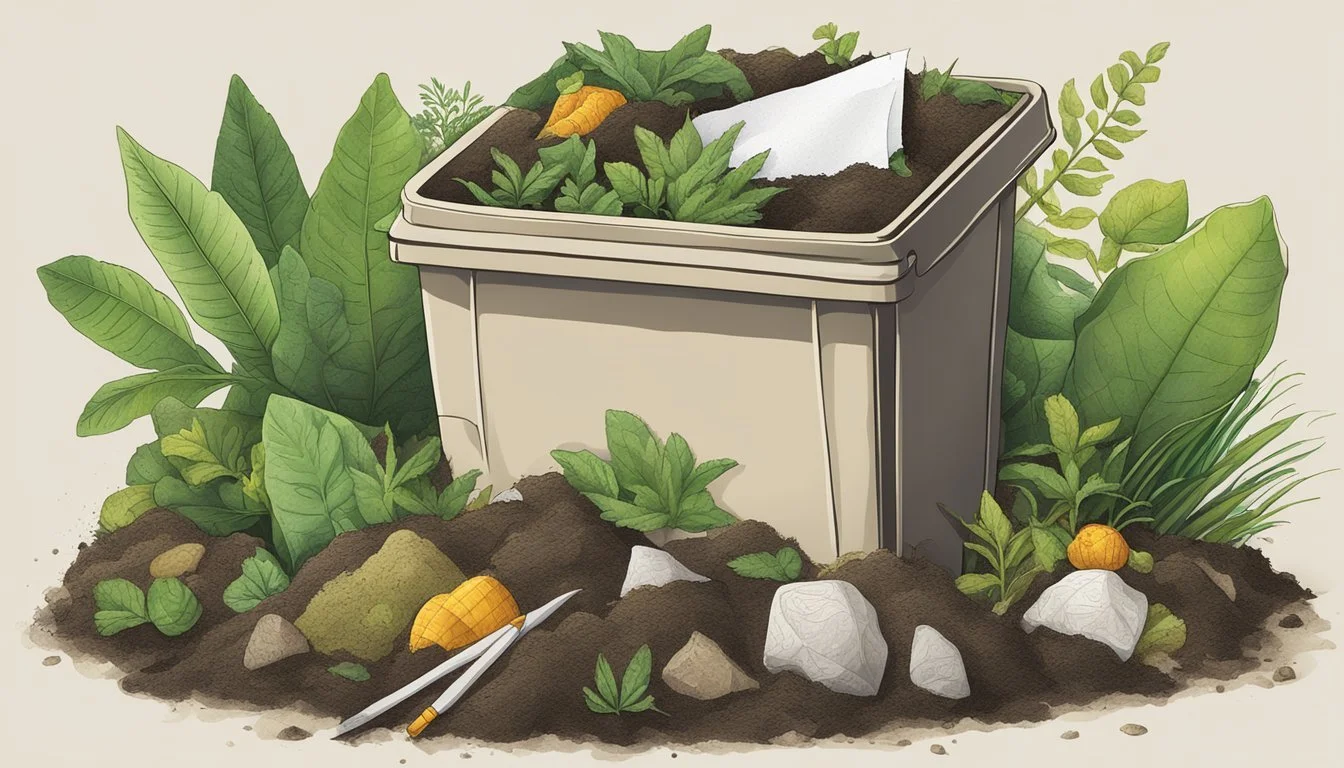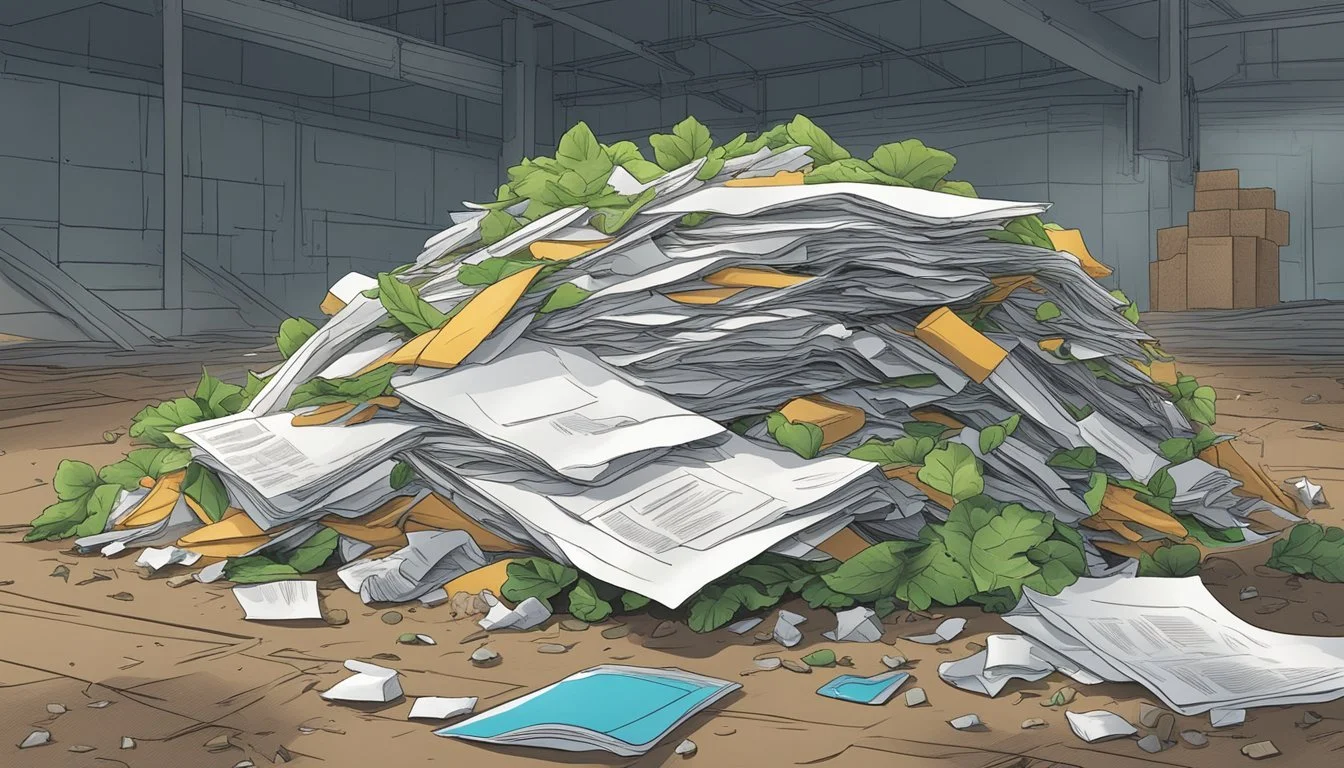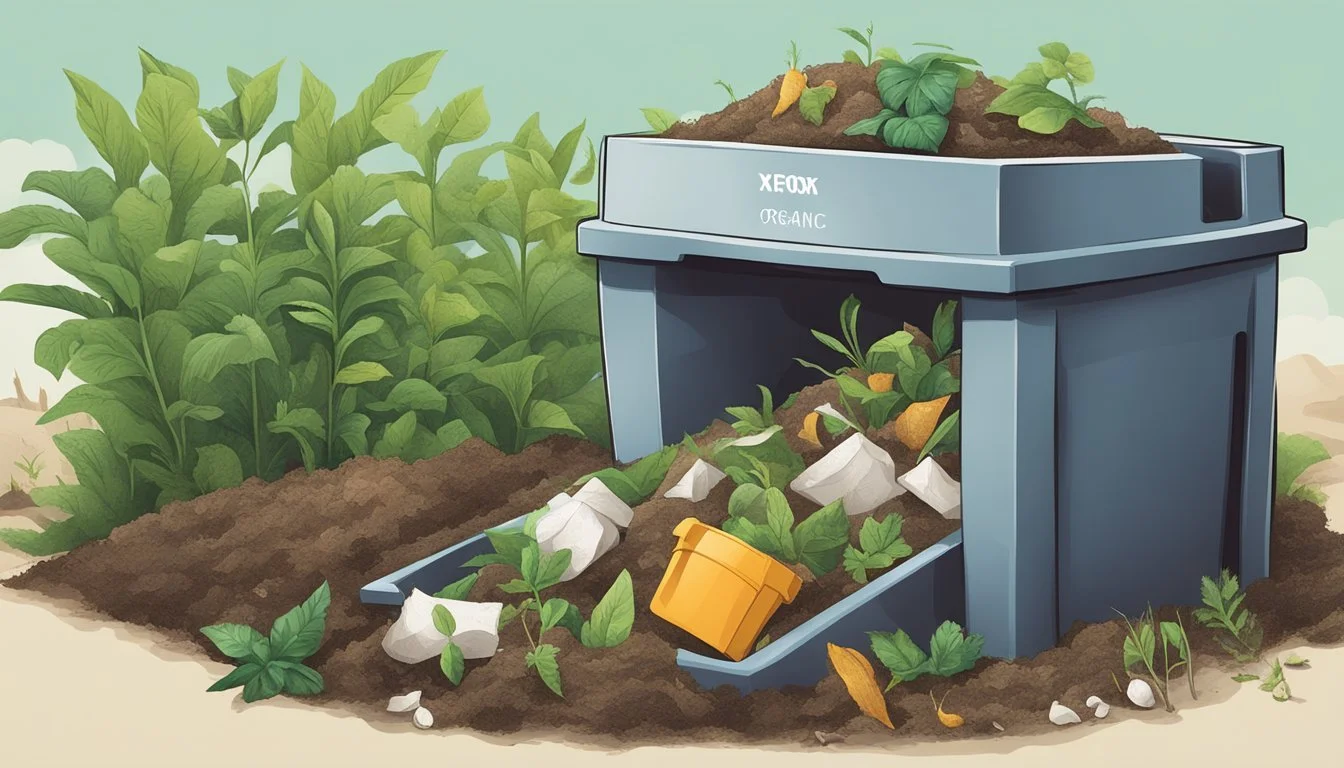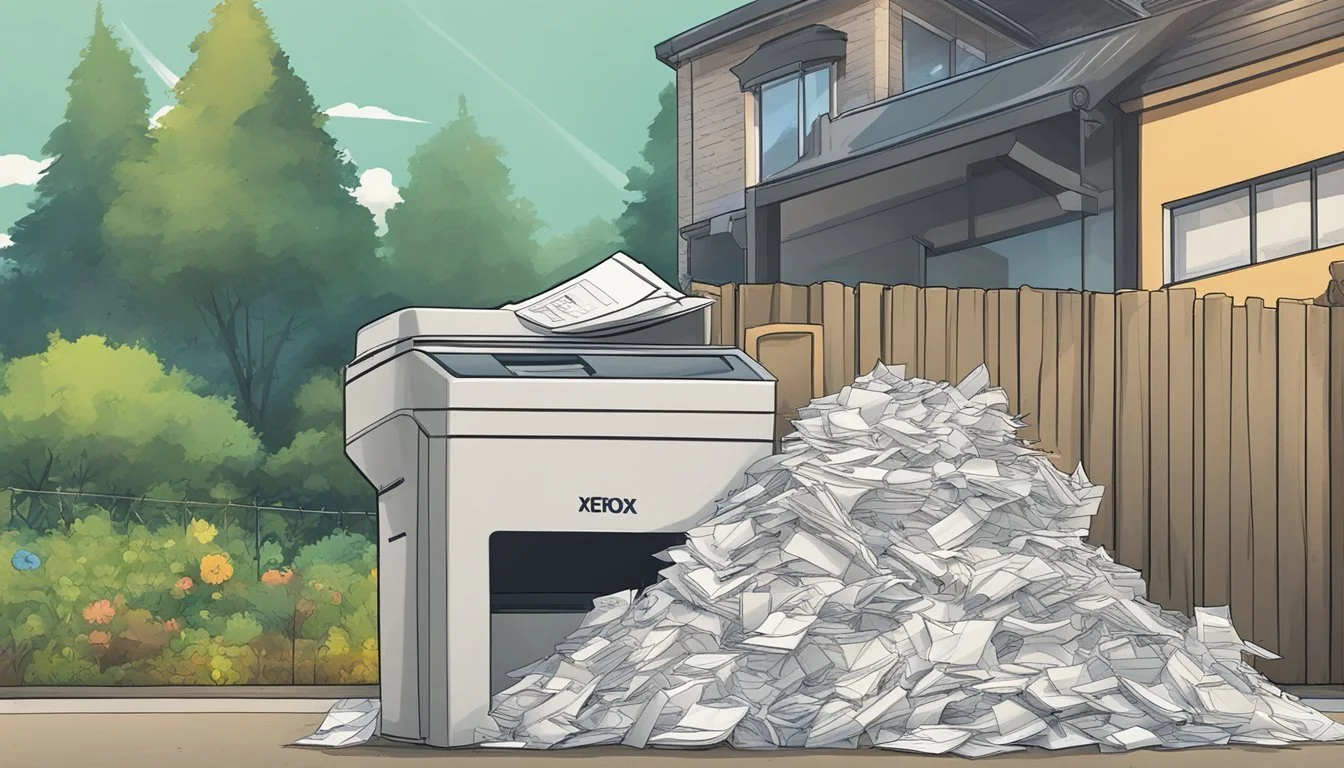Can You Compost Xerox Paper?
Understanding Its Impact on Composting Systems
Composting is an environmentally friendly process that turns organic waste into a nutrient-rich soil amendment. While many are familiar with composting food scraps and yard waste, there is often uncertainty around whether office paper, like that from a Xerox machine, is suitable for this green practice. Given that paper is derived from wood, a natural and biodegradable material, it stands to reason that certain types of paper can indeed be added to compost. Xerox paper, commonly used in offices for printing and photocopying, is typically uncoated and free of glossy finishes, making it a good candidate for compost piles.
When considering paper for compost, it's crucial to understand the balance required within the composting ecosystem. Paper products, such as those from a Xerox machine, are considered 'brown' material, rich in carbon, which must be balanced with 'green' materials that supply nitrogen. This balance helps to foster the optimal conditions for the decomposition process facilitated by microorganisms. In the case of Xerox paper, the ink is another aspect to consider; laser printer toner is mainly carbon-based and not present in large enough quantities to cause concern, so it generally poses no significant barrier to composting.
Understanding Composting Fundamentals
Composting transforms organic waste into valuable fertilizer, benefiting the environment by reducing landfill waste and enhancing soil health.
The Composting Process
Composting is a natural process that decomposes organic material into nutrient-rich soil. This process relies on the activity of microorganisms, which break down plant and kitchen waste into organic matter. The key factors for successful decomposition are moisture, heat, and aeration. An ideal compost pile incorporates a blend of materials to foster the necessary environment for these microorganisms to thrive.
Moisture: Compost should be moist to the touch, similar to a wrung-out sponge, to assist decomposition.
Heat: Generated by microorganisms during the breakdown process, temperatures in a compost pile can reach between 130°F and 170°F, which helps destroy weed seeds and pathogens.
Aeration: Turning the compost pile introduces oxygen, necessary for microorganisms to efficiently decompose the materials.
Green and Brown Material Balance
Stability in a compost pile is achieved by balancing green (nitrogen-rich) and brown (carbon-rich) materials. Green materials, such as kitchen scraps, grass clippings, and coffee grounds, supply nitrogen, which is essential for the growth and reproduction of the microorganisms that drive the composting process. Brown materials — including paper, cardboard, brown paper, and dead leaves — offer carbon, which provides energy for these organisms.
Green Materials (Nitrogen) Brown Materials (Carbon) Kitchen scraps Paper Grass clippings Cardboard Coffee grounds Brown paper Fresh garden waste Dead leaves
The ratio of brown to green should generally be around 3:1, offering the best condition for a well-balanced compost pile. Too much nitrogen can make the compost smelly, and excess carbon can slow down the composting process.
Proper management and understanding of these factors and components ensure that composting remains an eco-friendly method for organic waste disposal, reducing environmental impact while contributing valuable nutrients back into the soil.
Compostable Paper Materials
When adding paper to a compost pile, selecting the right types is crucial to maintain a healthy composting process and to avoid contamination.
Safe Paper Types for Composting
Shredded Paper: Shredded office paper, newspaper, and brown paper are generally safe for composting. They are best added in smaller pieces to accelerate breakdown.
Newspaper: Readily compostable and serves as a good carbon source.
Office Paper: Uncoated and non-glossy office papers are acceptable in compost.
Recycled Paper: Includes paper towels and toilet paper that are free from inks, dyes, and fragrances.
Egg Cartons and Paper Plates: Uncoated and untreated with plastics or waxes can be composted.
Paper Bags: Brown paper bags are a good addition to compost as they break down quickly.
Materials to Avoid in Composting
Certain materials in papers should be avoided in composting as they can introduce toxins or disrupt the composting process:
Coated Paper: Plastics, waxes, and similar materials used for coating are non-compostable.
Glossy Magazines and Glossy Paper: The coatings often contain plastics and harmful chemicals.
Dairy and Meat-Contaminated Papers: Can lead to odors and attract pests.
Heavily-Inked Papers: Papers with heavy inks, especially those with metallic inks, dyes, or colored prints should be avoided.
Compostable Papers with Plastic Stickers: The stickers are often plastic-based and not suitable for composting.
Greasy or Oily Papers: These can attract pests and are difficult to break down in compost.
Bleached Paper: Can add in small quantities but best to limit due to potential chlorine content.
Remember, the composting environment needs a balance of green and brown materials, and not all paper products are equal. Include paper materials judiciously to ensure that the compost remains productive and free of toxins.
Specifics of Composting Xerox Paper
Composting Xerox paper, a common type of office paper, can be both eco-friendly and beneficial for the compost heap. When incorporating printer paper into a compost bin, shredding it first significantly aids the decomposition process. The increased surface area provided by shredded paper allows for greater microbial access, which expedites its breakdown within the compost pile.
One should consider the ink used on Xerox paper. Most modern printer inks are non-toxic and soy-based, thus they can be safely added to compost. However, papers with heavy color printing may contain metallic compounds and should be added with caution to maintain an eco-friendly compost environment.
Table 1: Composting Xerox Paper
Aspect Consideration Ink Safety Soy-based/non-toxic inks are generally safe Paper Coating Avoid glossy or coated paper Shredding Recommended for quicker decomposition Color Printing Use sparingly due to potential heavy metals Recycling Alternative Compost if paper cannot be recycled
It is essential to note that not all Xerox paper is suitable for composting. Paper that is heavily coated or treated should be recycled instead, as the coatings can impede the decomposition process and introduce unwanted chemicals into the compost pile.
An ideal composting scheme is diverse, and adding some Xerox paper can contribute to a balanced compost heap. However, this should be done while ensuring that the majority of the compost consists of organic material that promotes aeration, like leaves and kitchen waste, thus complementing the paper component and promoting a healthy compost environment.
Best Practices for Composting Paper
To successfully compost paper, one must properly shred and prepare the paper products and maintain optimal conditions within the compost pile to facilitate decomposition.
Shredding and Preparing Paper
Before adding xerox paper to the compost, it should be shredded to increase the surface area and enhance microbial activity that breaks down the paper. Shredded paper decomposes more rapidly due to increased aeration, thus preventing the formation of mat layers which could lead to reduced oxygen flow and potential anaerobic conditions. This may inadvertently produce methane, a potent greenhouse gas.
Maintaining Your Compost Pile
A compost pile requires a balance of carbon-rich 'browns' and nitrogen-rich 'greens'. Paper, considered a 'brown', should be combined with 'greens' like food scraps or grass clippings to maintain a balanced carbon to nitrogen ratio. Turning the pile regularly is critical for aeration and to distribute moisture evenly. Overly wet conditions should be avoided as they can hamper aeration and lead to excess moisture, which is detrimental to the composting process. Conversely, a pile that is too dry can slow down the microbial activity necessary for composting paper.
Environmental Impacts of Composting vs. Recycling
Choosing between composting and recycling paper products can have different environmental impacts. Each method provides unique benefits and is suitable under certain circumstances.
Benefits of Composting Paper
Composting paper is a process that turns paper products into nutrient-rich compost, which is beneficial for soil health. When Xerox paper, which is typically uncoated and devoid of glossy finishes, is composted, it can break down easily and contribute to the creation of organic material that improves soil structure and fertility.
Environmental Benefits:
Reduces methane emissions from landfills
Lowers the carbon footprint as it sequesters carbon in the soil
Lessens the need for chemical fertilizers by enriching soil with organic matter
Types of Paper Suitable for Composting:
Non-glossy office paper
Newspaper
Non-bleached paper
Uncoated junk mail and envelopes
Non-glossy magazines
When to Recycle Instead of Compost
Recycling paper, on the other hand, focuses on reprocessing the paper fiber to be reused in new paper products. This can be more environmentally beneficial for certain types of paper that are not suitable for composting due to their chemical treatments or coatings, as these can introduce unwanted substances into the compost mix.
Environmental Benefits:
Saves trees by reducing the demand for virgin paper
Conserves energy and water compared to producing new paper
Reduces greenhouse gas emissions by diverting paper from landfills
Types of Paper to Recycle Instead of Compost:
Glossy or coated papers
Heavily inked or dyed paper
Sticky notes, due to their adhesive
Bleached paper, in larger quantities
In conclusion, while both methods aim to reduce environmental impact, the most suitable option depends on the type of paper and the end goal of the waste management process.
Integrating Paper Composting in Household Waste Management
Incorporating paper composting into household waste management is an accessible strategy for reducing landfill waste, and Xerox paper can play a part in this process. Through effective home composting strategies and careful avoidance of contamination, households can transform paper products into valuable compost for gardening and landscaping.
Home Composting Strategies
When adding Xerox paper to a compost bin, it is essential to shred the material to accelerate breakdown. Households can integrate paper composting within their kitchen waste practices by establishing a separate bin for compostable papers, including uncoated Xerox paper, paper towels, fruit and vegetable scraps, and other organic matter. Vermicomposting presents an alternative, where worms effectively break down paper and food scraps into nutrient-rich compost. However, it is crucial to balance carbon-rich paper with nitrogen sources like food scraps and manure to maintain a healthy compost pile.
Compost Bin Setup: Position the compost bin in the backyard, ensuring it is accessible for adding kitchen and garden waste.
Layering: Alternate layers of moist organic matter, such as food scraps, with dry materials like shredded paper.
Aeration: Regularly turn the compost pile to introduce oxygen, which is critical for decomposition.
Avoiding Contamination in Compost
To ensure the produced compost is of high quality, one must be vigilant about avoiding contamination. Non-compostable materials, such as plastic-coated paper or heavily inked Xerox paper, should be kept out of the bin to prevent the introduction of toxins. Only unbleached, non-toxic paper should be considered for composting to avoid chemicals that can harm the compost ecosystem.
Identify Compostable Papers: Use only compostable papers like non-glossy, uncoated Xerox paper and organic matter.
Exclude Non-compostables: Keep out plastics, metals, and chemically treated papers.
Monitor Compost Health: Check for signs of imbalance, such as foul odors or poor decomposition, which could indicate contamination.
Additional Considerations for Composting
When composting materials like xerox paper, it's important to understand the broader implications and regulations that may affect the composting process.
Involvement of Local Composting Regulations
Local composting regulations can significantly influence what can be included in a compost pile. Municipalities may have specific guidelines or restrictions on the types of organic materials that can be composted, primarily to ensure public safety and environmental protection. It is vital for individuals to consult their local waste management policies before adding xerox paper or other garden waste to their compost.
Impact on Gardening and Soil Health
Composting xerox paper can contribute to soil health by adding organic material that decomposes into nutrient-rich mulch. However, it is crucial to consider:
The ink used on xerox paper; soy-based inks are preferable as they are more biodegradable than petroleum-based inks.
The presence of any glossy coatings which may not break down easily and could contain chemicals detrimental to gardening purposes.
Incorporating the right kind of paper can enhance the soil’s nutrient profile, improving the environment for plants.







